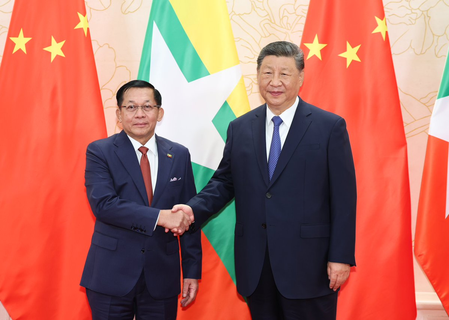Dhaka, Sep 24 — A series of infrastructure projects under the China-Myanmar Economic Corridor (CMEC), part of Beijing’s Belt and Road Initiative (BRI), are tightening China’s grip on Myanmar while granting access to the Indian Ocean. Projects such as the Kyaukphyu Special Economic Zone (SEZ) and the Muse-Mandalay-Kyaukphyu corridor link China’s Yunnan province to strategic port cities, securing Beijing’s trade and security interests.
September witnessed an unusual flurry of high-level visits by Myanmar’s junta leaders to China. Coup leader Min Aung Hlaing, during his trip earlier this month, hailed bilateral ties as the “strongest ever.” Senior ministers, including Defence Minister Maung Maung Aye and Navy Chief Htein Win, held talks in Beijing on military technology, drones, and safeguarding Chinese projects. Prime Minister U Nyo Saw visited Nanning for the China-ASEAN Expo, urging more Chinese investments, while other ministers sought cooperation in banking, construction, and trade.
China has pledged support for Myanmar’s December 28 elections, which will exclude the National League for Democracy (NLD). With 61 parties in the fray—nine contesting nationwide—the polls are expected to entrench junta-backed forces such as the Union Solidarity and Development Party (USDP). Western nations are unlikely to recognise the exercise as legitimate.
Beijing’s engagement spans defence, trade, and insurgent networks along Myanmar’s borders, reflecting a mix of geopolitical and economic motives. China remains the junta’s closest ally, cultivating ties with the Tatmadaw to protect its personnel, projects, and strategic interests.
Since the February 2021 coup, Myanmar has faced civil war and global isolation. Aung San Suu Kyi’s sidelined NLD remains barred from politics, while the junta uses elections as a façade for legitimacy. For Beijing, however, Myanmar is too vital a partner to abandon.












